|
My wonderful Aunt Di gave me a great Christmas present this year: a Shiitake Mushroom Mini Farm! 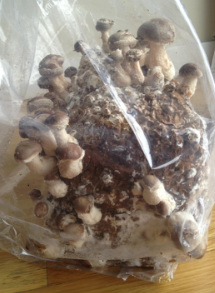 The mushrooms started to grow within a few days and have continued to grow like crazy; the picture to the left shows them at about a week old, so they'd grown twice as large by the time I cooked with them last night. As I don't cook with mushrooms too often, I had to google recipes. I've also been trying to incorporate more seafood into my diet and thought I should find a recipe to combine the two. I was lucky to find Salmon 'Bulgogi' with Bok Choy and Shiitakes. Bulgogi is a popular Korean dish typically made with beef marinated in soy sauce, sesame oil, and other seasonings. To make this a healthier dish I've substituted salmon for beef and replaced the soy sauce with coconut aminos. The following recipe has been adapted from the June 2008 Bon Appetit issue. Salmon 'Bulgogi' RecipeOrganic Ingredients:
Directions:
Health Benefits: Bok Choy, a staple in Asian cooking, is actually a type of cabbage and therefor a cruciferous veggie. Cabbage is well known for it's outstanding anti-cancer benefits. It presents a milder flavor with a higher concentration of vitamin A and vitamin C. One cup of bok choy provides more than 100% of the recommended dietary allowance of A, and close to two-thirds the RDA of C, which comes from its concentration of carotenoids such as beta-carotene and polyphenols. It's known for it's anti-inflammatory nutrients, digestive tract and cardiovascular support. Shiitake's are known in Asia as a symbol of longevity because of their health-promoting properties. They've been used medicinally by the Chinese for more than 6,000 years. Studies show they support our cardiovascular and immune system by preventing too much immune cell binding to the lining of the blood vessels. Shiitake's have also proven to exhibit anti-cancer benefits as they've been shown to help block tumor growth, sometimes triggering apoptosis (cell death) in cancer cells. They are known as a good non-animal source of iron, the B vitamins, manganese, phosphorus, and fiber. Read some more fascinating information here. Wild caught salmon is a great source of protein. Much of the focus about salmon is on it's amazing omega-3 benefits, known to improve mood and cognition, decrease numerous cardiovascular problems, eye-related problems, and cancer risk. Salmon is great for supporting our joint cartilage tissue, insulin effectiveness, and control of inflammation in the digestive tract. It is high in vitamin D, vitamin B12, tryptophan, selenium, and phosphorous.
0 Comments
It seems almost everyone I know is sick with the flu right now. I've never been an advocate of nasty flu shots as they contain counterintuitive ingredients including mercury, formaldehyde, aluminum and MSG, yet I haven't had the flu in about six years and I touch grimy yoga mats and sweaty cycling bikes five days a week. Even if your diet isn't perfect, there are some really simple ways to reduce your risk of catching the flu. While it's good to start implementing the suggestions from the last link, if you've already got the flu there are some things you can do support your immune system and recover. Below are some potent tools to stimulate the body's own anti-microbial response and rid your body of any nasal congestion, a runny nose, post-nasal drip, cough, sore throat, sinus pressure, chest congestion, and immune deficiency.
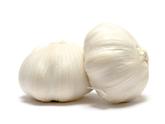 Garlic tea is really just fresh, chopped garlic that's steeped in hot water. Some people add lemon juice and honey, but that's not necessary for you to reap it's benefits. To make garlic tea, peel and roughly chop 3-4 organic cloves, let sit for about 10 minutes. Giving it this times releases the allicin which is the powerful antibacterial and antiviral compound. Add the chopped garlic to a mug and fill it with some hot water. Sip the garlic tea once it becomes cool enough. If you have a mild case of the flu or a cold, this tea should start working quickly. however, if you're particularly down with a bad case of the flu, you should consume this over a period of a few days. This is so good I ate it with a spoon. My new favorite and oh-so-easy recipe. Since eliminating dairy a few years ago, spinach artichoke dip (a childhood favorite) has become something I crave and on rare occasions buy only to be disappointed. It's never as good as I remember and I always experience uncomfortable belly symptoms after eating it. Today I finally decided to make a vegan version and was so pleased with it I surprised myself. I've never wanted to make this dip myself because, let's face it, artichokes can be intimidating. Thankfully, this recipes takes out the confusion, just don't let making cashew cream (instead of using dairy) scare you away! It's extremely simple and easy so long as you have a blender with a small attachable container or a food processor. If you don't have either of these things I highly recommend you go get one! Cashew Cream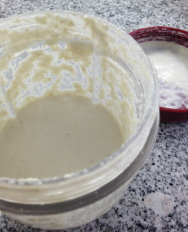 Organic Ingredients:
Rinse the cashews in a strainer under water. Place in a bowl with enough water to cover them about an inch. Cover the bowl and soak the cashews for a minimum of two hours but preferably overnight (I soaked them for about 3 hours). Drain the cashews, rinse under cold water and place into a food processor or high-speed blender with one cup filtered water. Process on high for several minutes, stopping to scrape down the sides if neccessary, until you have a very creamy texture. Makes roughly 1 1/2 to 2 cups raw cashew cream. Spinach-Artichoke DipOrganic Ingredients:
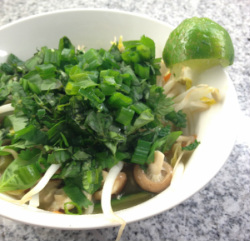 Considering that there is no snow up in the mountains, my motivation to ski is minimal and my drive to cook kicks into gear. Last weekend I made a Last Hoorah Chicken Chorizo Pizza and yesterday I decided to make Pho, or at least a healthier version of Pho, with my remaining cilantro and basil. Below you'll find this fairly simple recipe, which is more of a Vietnamese soup than a traditional Pho. It can be used in addition to Week One Cleanse recipes with optional chili paste, however the chili paste/rice noodles excludes it from being eligible in Week Two Recipes. The chili paste can be included as an after thought, stirring it into the dish prior to serving it and the rice noodles can be omitted and elegantly replaced by just using mung bean sprouts. Enjoy! Organic Ingredients:
Directions: Marinade chicken in coconut amino's and sesame oil for 30minutes to an hour; saute in a pan until cooked through. Boil noodles in salted water for 3 minutes. Place snow peas and carrots in coriander; drain noodles over them; rinse. Tie a sachet of ginger and cloves in cheesecloth; place in a large pot with broth; boil 5 minutes. Reduce heat to medium; add chicken, snow peas, carrots, and shiitake mushrooms; simmer 5 minutes. Add lime juice. Season with salt, chili paste, coconut amino's. Ladle into bowls and top with remaining ingredients (mung beans, scallions, cilantro, basil, and mint), adding a lime wedge to the side of the bowl. |
Kate ColemanE-RYT & Master Nutrition Therapist specializing in Food Allergies, Adjunctive Autoimmune Care, and Digestive Disorders. Archives
May 2013
DisclaimerNo information, ingredient or product mentioned on this site is meant to diagnose, treat or replace professional medical advice. Do not use this site to diagnose yourself. The information here is meant to give guidance in diet and lifestyle practices including balanced diet planning, instruction in the development of eating habits, physical exercises, and stress management in order to assist in general well-being.
Categories
All
|
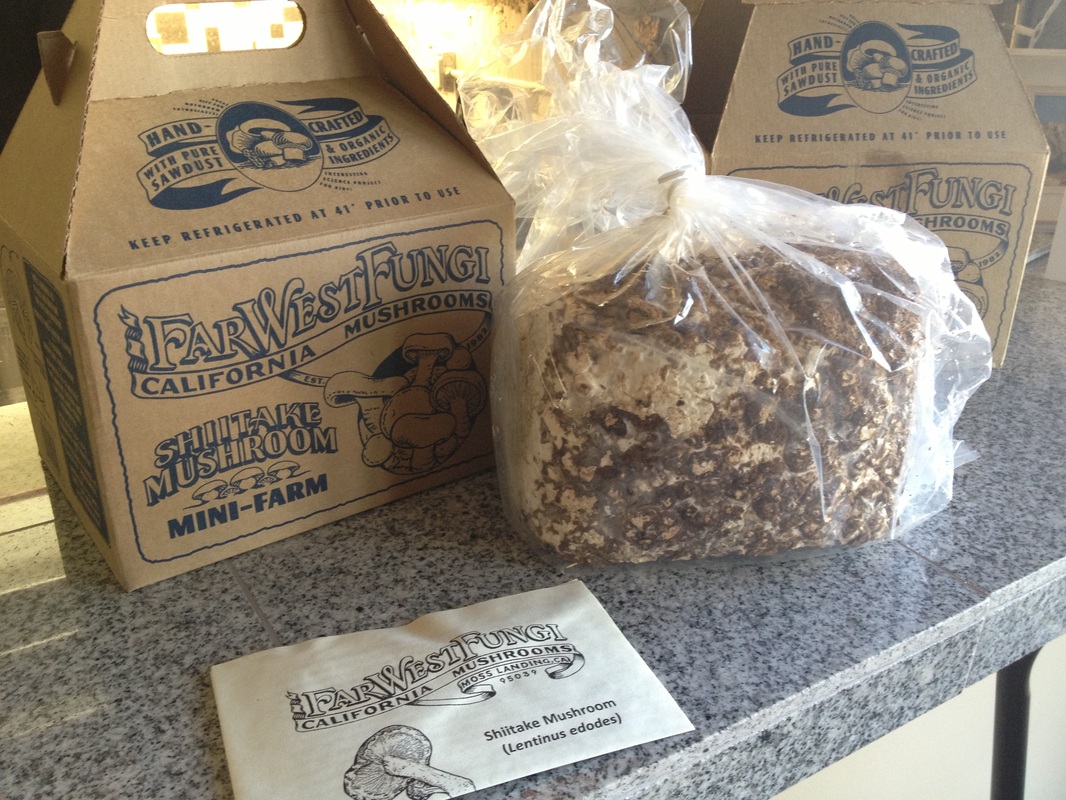
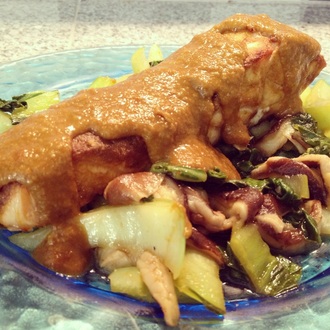
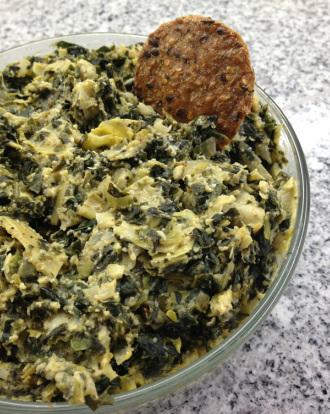

 RSS Feed
RSS Feed